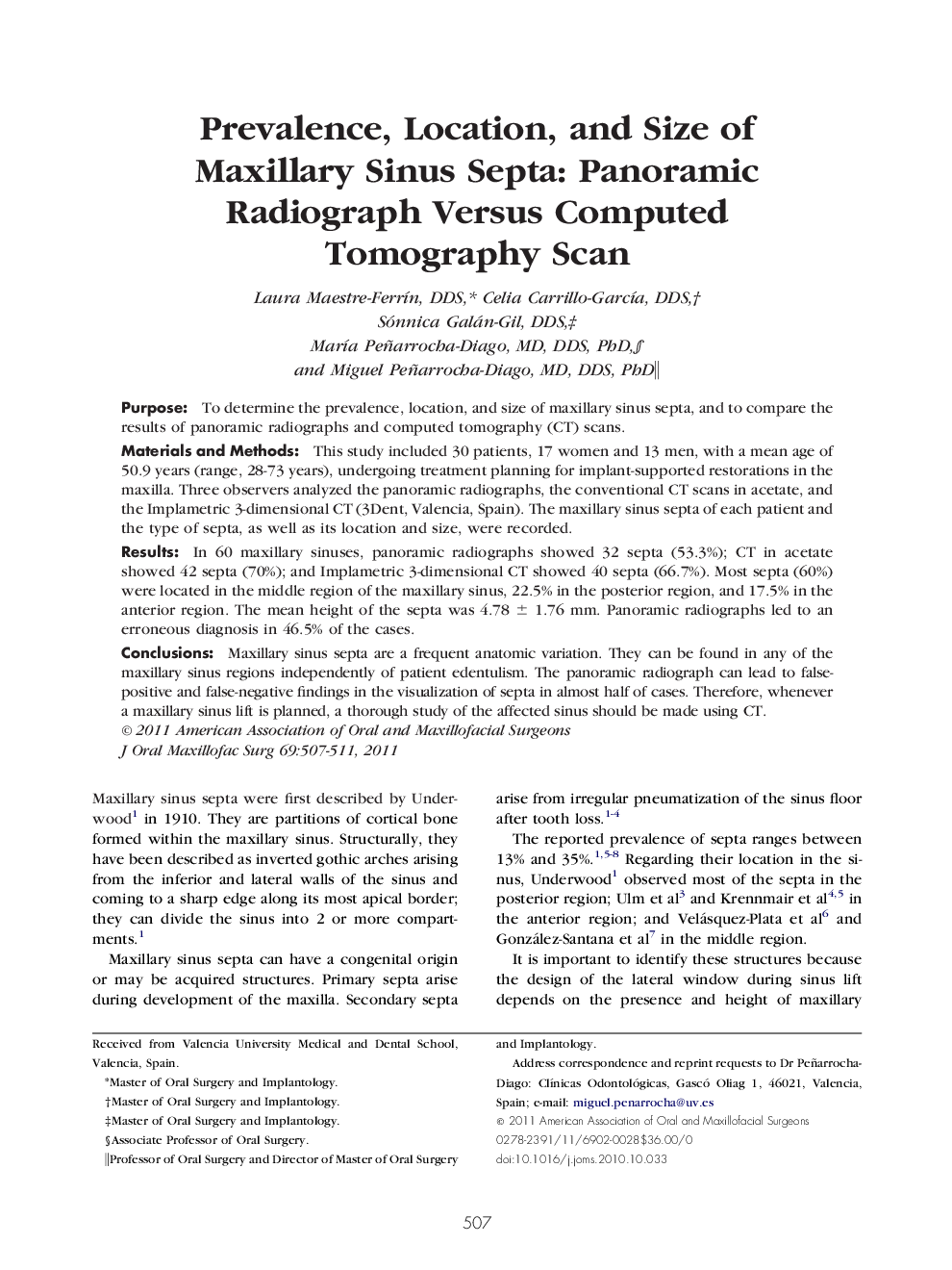| Article ID | Journal | Published Year | Pages | File Type |
|---|---|---|---|---|
| 3153534 | Journal of Oral and Maxillofacial Surgery | 2011 | 5 Pages |
PurposeTo determine the prevalence, location, and size of maxillary sinus septa, and to compare the results of panoramic radiographs and computed tomography (CT) scans.Materials and MethodsThis study included 30 patients, 17 women and 13 men, with a mean age of 50.9 years (range, 28-73 years), undergoing treatment planning for implant-supported restorations in the maxilla. Three observers analyzed the panoramic radiographs, the conventional CT scans in acetate, and the Implametric 3-dimensional CT (3Dent, Valencia, Spain). The maxillary sinus septa of each patient and the type of septa, as well as its location and size, were recorded.ResultsIn 60 maxillary sinuses, panoramic radiographs showed 32 septa (53.3%); CT in acetate showed 42 septa (70%); and Implametric 3-dimensional CT showed 40 septa (66.7%). Most septa (60%) were located in the middle region of the maxillary sinus, 22.5% in the posterior region, and 17.5% in the anterior region. The mean height of the septa was 4.78 ± 1.76 mm. Panoramic radiographs led to an erroneous diagnosis in 46.5% of the cases.ConclusionsMaxillary sinus septa are a frequent anatomic variation. They can be found in any of the maxillary sinus regions independently of patient edentulism. The panoramic radiograph can lead to false-positive and false-negative findings in the visualization of septa in almost half of cases. Therefore, whenever a maxillary sinus lift is planned, a thorough study of the affected sinus should be made using CT.
